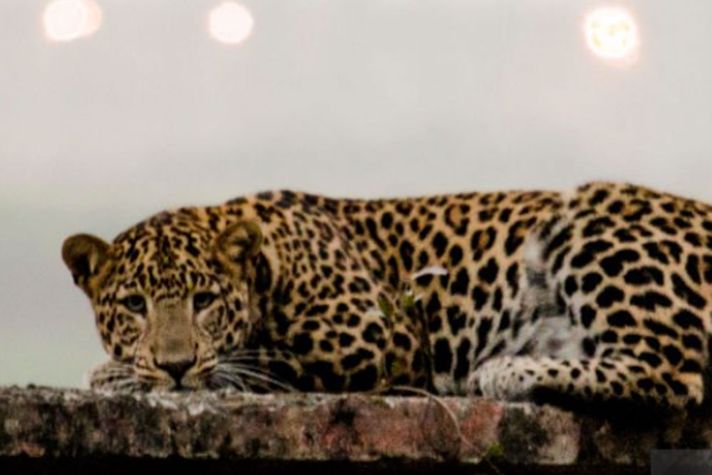Leopard Spotted Again at Pune Airport Within a Week; Search Operation Intensifies

Leopard Spotted Again at Pune Airport Within a Week; Search Operation Intensifies
The search for a leopard spotted within the premises of Pune Airport — which also houses an Indian Air Force base — has entered its eighth day, with forest officials still struggling to capture the elusive predator. This marks the second confirmed sighting in just seven days, sparking safety concerns and prompting a ramp-up in monitoring efforts.
The latest sighting occurred on Monday evening around 6:30 PM, when airport personnel noticed the animal near the airport boundary. Later that night, camera traps captured the leopard near a tunnel entrance, which forest officials believe it has been using to navigate the area discreetly.
In response, the forest department has significantly expanded its surveillance setup. A total of 13 camera traps, four trap cages, and four live monitoring cameras have now been installed around the last known location of the animal. Additionally, sniffer dogs brought in to assist the operation have picked up the leopard’s scent near several water sources within the airport grounds.
“Since it’s an adult leopard, it’s highly alert and aware of human presence. It has been able to dodge our teams successfully,” said Mangesh Tate, Assistant Conservator of Forests, Pune. “We are hoping it will eventually take the bait placed in the trap cages,” he added.
Given the potential danger, airport staff have been advised to avoid moving alone, especially after dark, and to use flashlights for safety. “The animal was seen not far from the runway, but due to the bright lights and noise, we can’t be sure it’ll return to that area,” Tate noted.
Wildlife experts consulted by Times of India believe the leopard may have found a temporary but suitable habitat within the airport’s secure boundary. According to them, the presence of stray dogs and small mammals provides a steady food source, while the network of tunnels offers shade and a place to rest.
One expert, who wished to remain anonymous, explained, “Its primary motivation could be access to food — particularly stray dogs. After feeding on a large prey, a leopard can go over a week without needing another meal.” They also pointed out that the availability of small water bodies makes the environment even more favorable for the animal.
“Now that it has shelter, food, and water, and is slowly adapting to human activity like noise and light, the leopard might be feeling quite comfortable here,” the expert said. Despite this, they warned that the presence of a wild predator in a high-security, high-traffic area is a serious concern and poses a definite risk to human safety.









